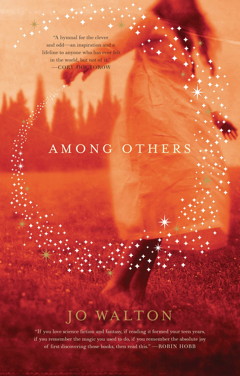Chances are that by now you’ve already seen the extended edition of The Return of the King — even if your name is John Moltz — but here’s my take on it.
The first thing that bears mentioning (as Andrea noted) is just how chaotic putting this film together was — something that’s abundantly clear from the appendices and from the writers’ commentary. Not just in the mad, last-minute rush to get the film completed, but in the changes in the story between principal photography and the final result. They took the footage they had and used it differently — in a different order, say — when the story changed. It looks like ROTK was the most reworked of the three films.
These explain some of the inconsistencies that people like me love to pick over: why Pippin is riding with Gandalf when the old boy rescues Faramir and Co. from the Nazgûl, why Arwen’s and Elrond’s apparel changes from one second to the next in Rivendell, and why the newly added scene with Saruman seems a little unfocused. (Presumably this explains where Aragorn’s horse went at the Morannon.)
All of which speaks to how big a project this was, and how easily they could have ended up over their heads. It’s amazing that it was done; even more that they did it as well as they did.
But if they had gone ahead with their plan for a duel between Aragorn and Sauron — they used some of that footage in the fight with the troll — I would have slain them all. No no no. Thank you for not following through with that foolishness.
The extra footage is the usual mix of the following four types:
- Essential material that I wish they hadn’t cut. (All the scenes of Frodo and Sam in Mordor that had been cut, for example. Also, the fine scene between Denethor and Faramir.)
- Important material that helps us make sense of scenes that would otherwise be confusing. (More material on the White Tree, what happens to Gothmog, the Houses of Healing.)
- Neat material that adds considerably to the movie, but isn’t vital. (I’d put the Mouth of Sauron and the extra footage during the siege in this category.)
- Superfluous material, the benefits of which are outweighed by the penalty inflicted on the movie’s pace — and on your bladder.
In a change from the previous two films, the extra footage does not just add to the film, it changes it: lines are given in a different order; characters suffer a different fate; events occur at a different time of day.
The end result is a film that is more cohesive than the theatrical version, with some fine moments that deserve not to be missed, but that really, really feels long. At least there are fewer superfluous bits in this one than there were in The Two Towers.
Don’t miss the insane bits. The easter egg is in its usual place, but it’s not what you’d expect: it’s not as high concept as the previous two, but it’s funny as hell. And the actors’ commentary: do not miss the actors’ commentary. Pure chaos.
 Today was the official publication date of Jo Walton’s new novel, Among Others. It’s a fantastic book, one of the best I’ve read in a long time. It’s about fairies, and magic — and growing up reading science fiction and fantasy. That sounds like a dissonant combination, but oh does it ever work.
Today was the official publication date of Jo Walton’s new novel, Among Others. It’s a fantastic book, one of the best I’ve read in a long time. It’s about fairies, and magic — and growing up reading science fiction and fantasy. That sounds like a dissonant combination, but oh does it ever work.